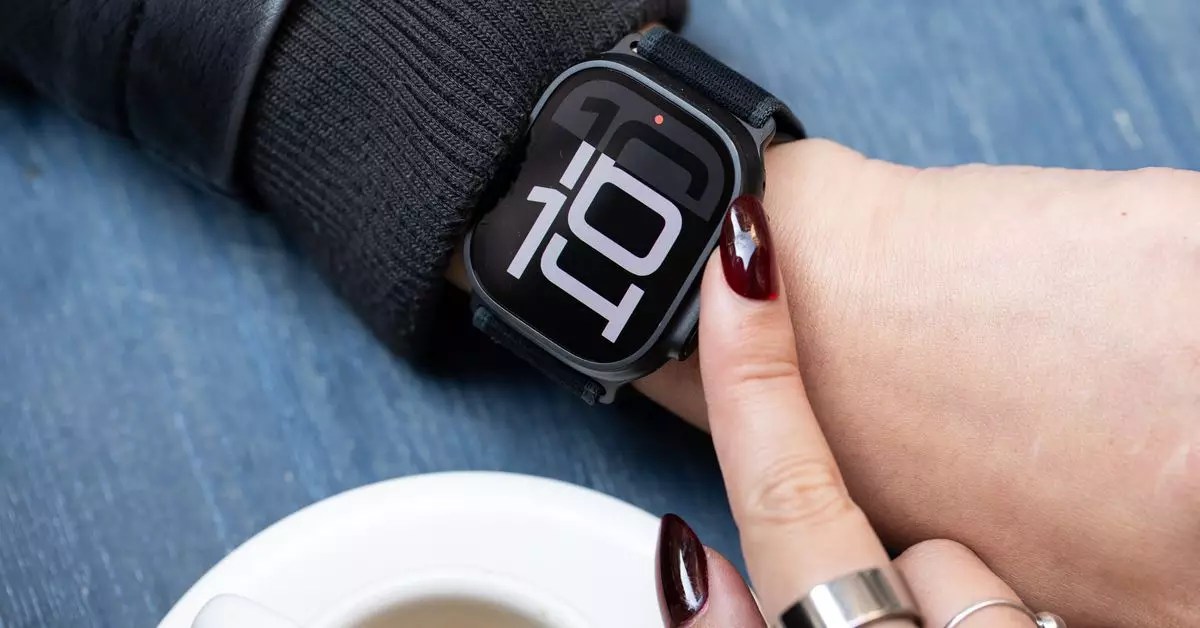The tech landscape is rife with devices that often tout the latest and greatest features, but at times, this promise can feel more like a siren song than a substantive reality. The recent release of the black Apple Watch Ultra 2 leads us into the heart of this dilemma—does a new color choice constitute a worthy upgrade from its predecessor? As we dive into the design, emotional resonance, and the often-overlooked consumer psychology involved in such decisions, we can unravel the layers behind this intriguing gadget.
It’s impossible to overlook the visual appeal of the black Apple Watch Ultra 2. The sleek sheen of black titanium wrapped in diamond-like finishing creates a refined aura that is undeniably captivating. This watch is not merely a functional piece of technology; it has the potential to be a fashion accessory that enhances personal identity. The idea that our gadgets can provide an emotional or psychological uplift is deeply rooted in consumer behavior. Just as a vibrant color can stimulate happiness or nostalgia, so too can the simple choice of a bold hue evoke a sense of empowerment or connection. The black variant stands out in a sea of silver and white, drawing attention from professional and casual onlookers alike.
Yet, one must question the depth of that allure. Do we genuinely desire this new color, or are we enchanted by the marketing magic that convinces us that novelty, however superficial, translates into value? When assessing purchases, it’s worth asking whether aesthetics alone justify the expenditure—especially at a premium price point like $800.
The crux of the matter centers on the functional benefits (or lack thereof) offered by the black Apple Watch Ultra 2 as opposed to the standard version. Do consumers really need yet another device boasting similar capabilities? The tech community has long grappled with the phenomenon of annual upgrades, which often appear more as marketing strategies rather than genuine innovations. With the Ultra 2, the differences are minimal—with color variations being the main standout feature.
As seasoned tech enthusiasts often rally against planned obsolescence, the dire decision to upgrade purely for a new shade feels increasingly misguided. Our rational selves can recognize the futility of such a choice, yet the emotional allure might push us towards an impulsive purchase. The irony lies in the recognition of a pattern; even when we know we shouldn’t succumb to marketing temptations, the pull of an alluring object can overwhelm reason.
Wearing a watch that reflects a certain aesthetic opens a dialogue around identity and projected self-image. The black Apple Watch Ultra 2 serves as more than just a gadget; it can act as a canvas for personal expression. Similar to fashion choices, the gadgets we opt to carry are often indicative of our tastes, preferences, and even aspirations. As one undergoes the iterative process of self-definition, our select gadgets—like the Apple Watch—can partake in narrative construction.
Perhaps the most profound observation lies in how the black Ultra 2 transforms one’s perception of self. The contrast between feeling mundane with a regular Titanium watch versus the reinvigorated confidence afforded by the black version illustrates the psychological interplay at work. The subtle joy derived from wearing something that feels powerful may provide comforting distraction in an often chaotic world.
Ultimately, the question transcends whether or not the black Apple Watch Ultra 2 is a necessary purchase—what’s more critical is the understanding that not every acquisition needs to serve a utilitarian purpose. In a world awash with gloom and stress, treating oneself to an object that brings joy—even if that means acquiring a watch that’s merely a color variant—can be a simple yet profound act of self-care. It’s a recognition that, while logic can guide us in many aspects of our lives, the enjoyment derived from a well-designed gadget can hold its own weight in the fabric of our daily experiences.
As the lines between technology, identity, and consumerism continue to blur, perhaps it’s time to embrace our whims and revel in the simple joys that a splash of color can bring, embracing the emotional dimensions of our purchases without guilt. After all, in a landscape heavy with responsibility, finding pleasure can be an act of rebellion in itself.


Leave a Reply